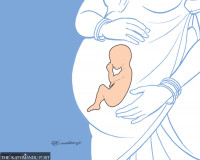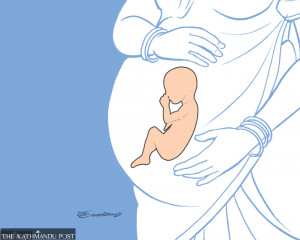Health
As cases surge and hospitals fill up, doctors are worried
With only seriously ill cases coming for treatment, doctors say that the virus is much more widespread than daily infection data shows and the next two months will be critical.
Arjun Poudel
On Friday, Patan Hospital held a meeting of doctors and administrators to discuss the growing surge of the coronavirus cases and the possible scenario in the coming days.
Doctors at the hospital were worried about themselves getting infected and if they and their family members would get beds in the intensive care unit and ventilator support if the need arose.
“We doctors too are very worried about the possible worst-case scenario,” Dr Ravi Shakya, director at the hospital, told the Post. “We too do not have answers about what to do if such a situation emerges.”
Of the 21 intensive care unit beds and 17 ventilators at Patan Hospital in Lalitpur, all are occupied with the seriously ailing patients infected with Covid-19. Even beds with high flow of oxygen are occupied.
And what is alarming is no patient placed on ventilator support has recovered this year and even young patients are in need of ventilator support.
“Last year too the recovery after ventilator support was very rare but this time no one has recovered after being given such support,” said Shakya. “Ventilators become free only after patients placed on them expire.”
Given the growing number of Covid-19 patients being admitted, the hospital, which had allocated 60 general beds for the infected patients, has already expanded capacity three fold to 180 beds in recent weeks. It is now mulling allocating additional beds and even preparing to convert the entire hospital for the service of the patients infected with the coronavirus.
“This year the situation will be worse than last year,” said Shakya
Then there is the issue of oxygen supply.
Hospitals are now gasping for oxygen, as the majority of hospitals do not have their own oxygen plants and in the few that do, the plants are not in operation.
The oxygen plant at Patan Hospital is not in working condition but it has now initiated the process to fix it. But that will take at least three months given the bureaucratic procedures that need to be followed, according to Shakya.
In the meantime, the hospital has been reliant on oxygen cylinders. But now the supplier has informed the hospital administration that demand is high and supply may be disrupted.
“Until now they have been supplying but we don’t know if they can continue supply in the coming days,’ said Shakya.
According to the Health Ministry, of the 185 hospitals, only 26 have their own oxygen plants and all are not in proper working condition.
Intensive care unit beds are filling up in other hospitals too besides Patan Hospital.
Sukraraj Tropical and Infectious Disease Hospital said that 90 percent of its 60 general beds and all 20 beds in the intensive care unit and ventilators have been occupied for the last few days.
Over half a dozen patients are in the emergency unit waiting for beds in the intensive care unit and the general ward.
“We will set up an oxygen supplying facility in the corridors and elsewhere in the hospital so that critically ill patients waiting for beds can be saved,” Dr Sagar Rajbhandari, director at the hospital, told the Post. “We will add 10 more beds in the emergency department.”
According to him, entire families are getting infected and getting seriously ill.
Nepal on Saturday reported 2,486 new cases from polymerase chain reaction tests and 133 from antigen tests. The Health Ministry said that 14 deaths have been recorded in the last 24 hours, pushing the total toll to 3,136. Active cases stand at 16,828 and total cases reached 297,087.
On Saturday, 213 seriously ailing patients were receiving treatment at intensive care units and 69 were on ventilator support in Nepal.
Public health experts say that Nepal is heading towards a grim situation in the coming days and it will not make much difference even if restrictions are enforced, as the virus has already penetrated the society.
“Due to complacency from all levels, we have reached a very difficult situation,” Dr Bhagwan Koirala, chairman of Nepal Medical Council, told the Post. “The situation is really serious.”
New cases are being diagnosed only after seriously ailing patients reach hospitals for treatment, which means the virus has already spread severely in society.
Doctors have been recommending various restrictions, including two weeks’ lockdown in disease-hit areas, but authorities concerned have been ignoring their suggestions.
“Whatever the government says people should abide by the safety measures strictly to save themselves and their family members,” said Koirala. “The next two to three months will be too tough for us. Even the doctors and hospitals may not help in the coming days.”
Nepal reported its highest daily count of 5,743 on October 21, four months after the four-month lockdown was lifted.
But there was a dramatic decline in cases. Even public health experts were surprised. But they continued to ring alarm bells about a possible second wave.
There was complacency all around. When the number of cases declined, the government acted as if the country had triumphed over the virus.
Governance took a backseat after Prime Minister Oli dissolved the House on December 20. The season of protests and demonstrations returned. Amid political bickering, the government and agencies concerned ignored health experts’ warnings. Members of the public happily threw away masks.
Only 338 intensive care unit beds and 192 ventilators were added to the public health facilities after the first wave of the coronavirus. The number of general beds which could be allocated for Covid-19 patients was increased by 4,021.
Currently, there are 1,486 intensive care unit beds and 634 ventilators in operation throughout the country. The number of general beds, which can be allocated for coronavirus patients, stands at 18,917.
The Health Ministry has estimated up to 800,000 new cases within July 15 in a worst-case scenario. Up to 15,000 people could require intensive care unit beds and ventilators and 45,000 could need high flow oxygen supply.
However, the agency concerned has still not taken the issue with the urgency it deserves. Doctors say if work is done on a war footing, several hundred intensive care unit beds and a few thousand general beds can be added.
“The condition will be very difficult in the coming days compared to now,” added Koirala. “The time has come for all agencies concerned to start preparation. Instead of regretting in the future, people should strictly follow safety measures whether the government enforces lockdown or not.”
An official at the Health Ministry said on condition of anonymity that they have stopped recommending restrictive measures, as the other government agencies concerned do not implement them.
But that is no reason not to recommend restrictions and the virus must be fought together, experts say.
“There will be no point in enforcing restrictions after the situation goes out of control,” Dr Prabhat Adhikari, an infectious disease and critical care expert, told the Post.
Since the lockdown last year from March 24 to July 21 was a failure, and the government was criticised for the decision, authorities this time have insisted that blanket restrictions would be enforced only as the last resort. A section of experts and analysts are also for not imposing a lockdown given the sufferings the poor and marginalised could face. But with the number of cases and deaths growing, calls too have been growing for a lockdown to break the chain of transmission.
Mahendra Prasad Shrestha, chief specialist at the Health Ministry, said that a lockdown should have been enforced in the Kathmandu Valley long ago.
“The Cabinet meeting has given authority to the local levels and the chief district officers to enforce lockdown but they are hesitating to do it,” Shrestha told the Post. “All [Covid-19] hospitals in Kathmandu Valley are already full.”




 5.14°C Kathmandu
5.14°C Kathmandu














